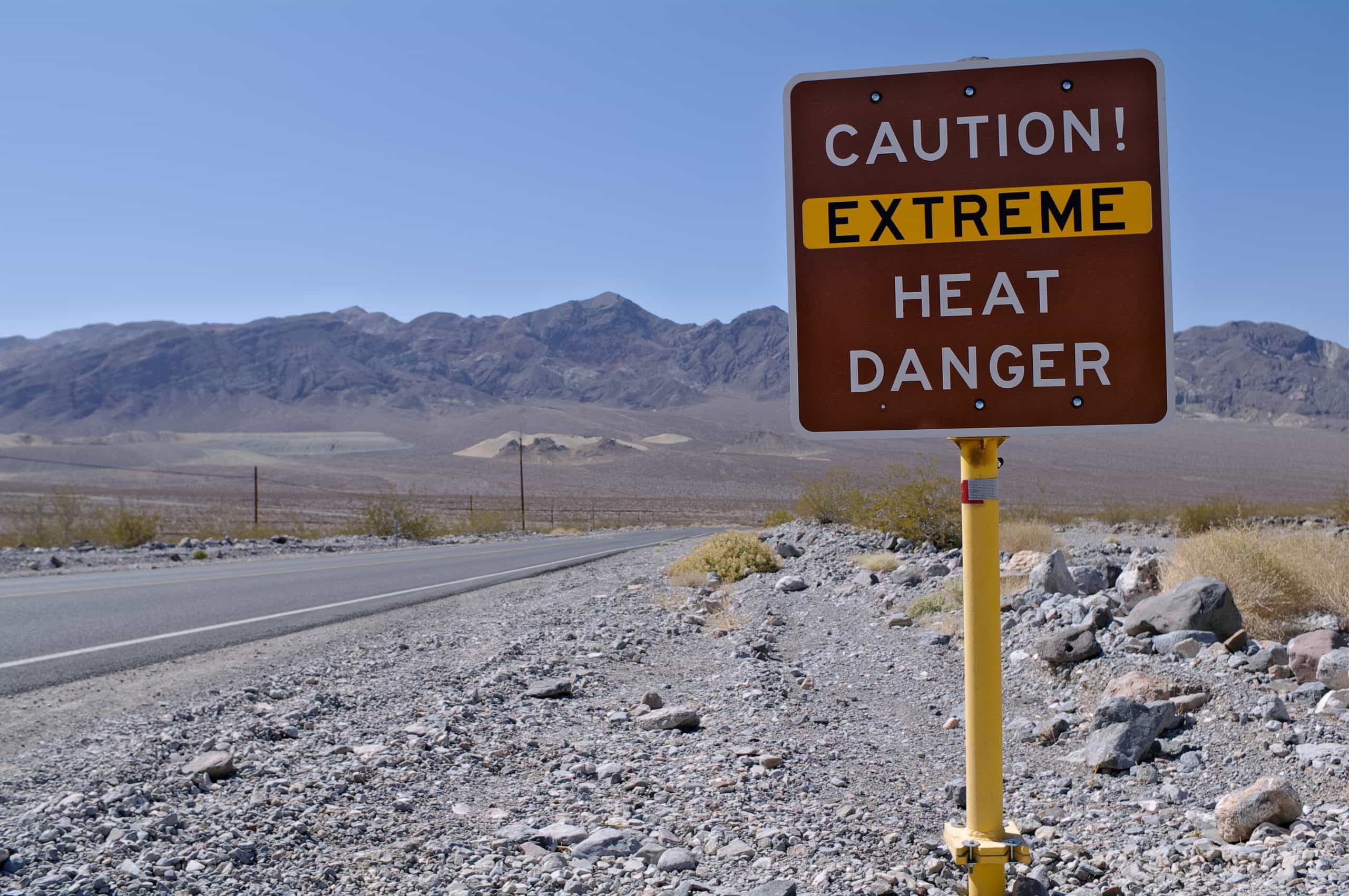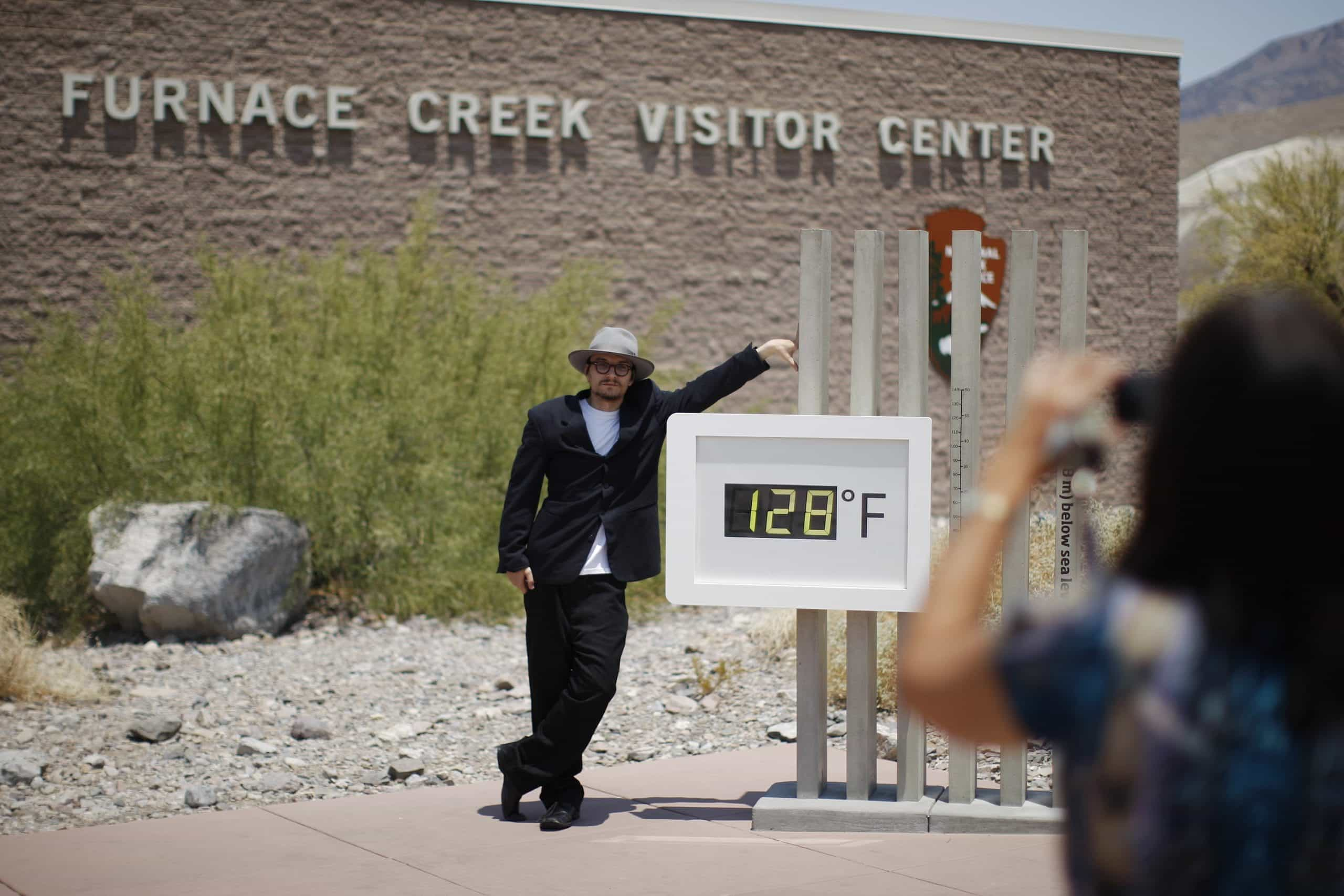
But everything from amateur readings to unverified social media postings provides evidence, reputable or not, of temperature records being broken. In May 2021 the American Meteorological Society produced a case study showing a satellite-recorded land surface temperature of 177.4°F (80.8 °C).
Temperature Records Give Tourists the Hots
Do you have your next holiday booked? If you are a sun worshiper, you may consider spending a few days at The Oasis at Death Valley. Four hours north-east of Los Angelis and two hours west of Las Vegas this luxury Californian resort was formerly called The Furnace Creek Inn.
It was here, on July 10, 1913, daytime heat reached 134.1°F (56.7°C) making it officially the hottest temperature ever recorded.
From 1922 until 2012 the World Meteorological Organization (WMO) had listed the record for the hottest temperature on earth as belonging to Aziziya, Libya. But this record was decertified by the WMO in January 2012. They stated: “Persuasive evidence led to a faulty reading recorded in error by an inexperienced observer.”
Playing host to the hottest temperature on earth serves the Oasis Resort well. The Death Valley Natural History Association also does good business in selling ‘134°’ t-shirts. But the validity of this record temperature from a reading taken well over a century ago is questioned by many.

Tourist flock to the record-breaking Death Valley where many pose for snapshots alongside an unofficial thermometer at the Furnace Creek Visitor Center ©GettyImages
Recording Myths and Anomalies
Weather historian Christopher C. Burt is a leading skeptic. At a gathering of meteorology experts assembled at the Furnace Creek site to mark Death Valley’s 100-year record in 2013, he told the assembled media he was skeptical of the official hottest temperature ever recorded.
Declaring the temperature record to be a “myth” Burt pointed out Death Valley had never come close to matching 134°F since 1913 and had not even breached 130 degrees. Supporting his beliefs with facts – such as wind conditions that day being too high to allow for the extreme heat – he described the record as “way too anomalous.”
But eight years later Furnace Creek still holds the record. And if it were to lose its original claim to the hottest temperature ever recorded it would quickly recapture it. In July 2021 Forbes and the New York Times published stories about temperatures reaching 130°F. This lesser temperature is now the heir apparent to the official record.
Lies Damn Lies and Thermometers
Ignoring readings made by amateur meteorologists and social media postings supposedly showing car tires melting in the streets – something that is not physically possible as they are made of vulcanized rubber – there are three recognized ways to identify temperature records.
Firstly, there are air readings. These are the standard measurement noted by the WMO and used by the Guinness World Records for purposes of determining the official hottest temperature ever recorded.
The second temperature measurement is the ground surface. Recording temperatures here will always give a far higher reading than air temperatures. However, the readings are susceptible to variations depending on where they are taken. Dry darkish soils will produce higher temperature records than a light deeper surface.
Thirdly, there are readings taken from orbiting satellites using an infrared spectroradiometer. Remarkably, despite the technology involved, these measurements are often considered less reliable than ground-positioned thermometers due to a satellite’s potential altitude loss.
So What Are the Highest Temperatures Ever Recorded?
While not verified, the following temperature records are generally considered creditable.
Air Temperature
- 60°C (140°F) July 1960, Kopperl, USA
- 60°C (140°F) July 1966, Mexicali, Mexico
Satellite Temperature
- 80.8°C (177.4°F) May 2021, Sonoran Desert, Mexico
- 70.7°C (159.3°F) May 2005, Lut Desert, Iran
Ground Temperature
- 93.9°C (201.0°F) July 1972, Furnace Creek, USA
- 84°C (183°F) July 2011, Port Sudan, Sudan
To proverbially cloud things over further, the American Meteorological Society concedes: “There are limited temperature observations in the polar regions and desert environments where the most extreme temperatures occur. The limited coverage of ground-based observations indicates that the hottest and coldest spots reported by WMO are likely not the actual hottest and coldest places on Earth.”
The Coldest Temperatures Ever Recorded?
The WMO verified, and Guinness World Records certified, the coldest temperature ever recorded as happening at Russia’s Vostok research station in Antarctica. In July 1983 the temperature there plunged to -89.2°C (-128.6°F). Once again, the reading was taken from the air.
An August 2010 satellite observations did record a colder surface temperature of −93.2°C (−135.8°F) in Eastern Antarctica. It is generally accepted surface temperatures can and do drop to approximately −98 °C (−144 °F) in parts of Antarctica.

The meteorology research station at Amundsen–Scott South Pole Station Antarctica – where things can get very cold. ©Shutterstock
The coldest temperature ever recorded in Europe occurred in European Russia in 1978. Many will be surprised, with a record low of −52.6°C (−62.7°F), it is Austria that sits second in the European ‘cold list’. It is positioned above Sweden, Finland, and Norway. At the bottom of this list is Malta – the only country in Europe which, since records began, has never dipped below freezing point.
Betting on More Records
So, what do all these extreme highs, lows, and an accepted general warming of the climate actually mean? If you are betting on the weather outcomes with a bookmaker, it means the chances of a white Christmas are increasing year on year.
Similarly, the UK’s highest recorded temperature of 38.7°C (101.7°F)set in July 2019, is unlikely to stand for long. Every spring it is introduced into bookmaker pages at a short price to be broken.
On a far more serious note, the recent case study produced by the American Meteorological Society brings home some sobering truths about the impact of weather events. It states: “Between 1980 and 2018, over 2,000 extreme events including heatwaves, droughts, wildfires, and winter storms have occurred, killing over 180,000 people and leading to nearly $700 billion in damage.”
Generally speaking, what are the hottest countries in the world?
There is a huge heat belt across northern Africa extending into Asia. It means Tunisia, Morocco, Algeria, Western Sahara, Iran, Kuwait, Iraq, United Arab Emirates, and Saudi Arabia have all experienced temperature records of 50.0°C (122.0°F) or greater.
Which countries have the highest average temperatures throughout the year?
Burkina Faso, a small landlocked country in West Africa, heads a Wikipedia list of countries by average yearly temperature. Of the better-known tourist destinations Thailand, Singapore, United Araba Emirates, Maldives, and Seychelles all have an average annual temperature in excess of 26.0°C (78.8°F).
Which is colder, Antarctica or the North Pole?
At both the north and south pole the sun never rises more than 23.5 degrees above the horizon and both experience six months of continuous darkness. But Antarctica is colder than the North Pole as it sits above a very thick ice sheet, which itself sits on a continent. The surface of the ice sheet at the South Pole is more than a mile-and-a-half above sea level.


